-
 Bitcoin
Bitcoin $106,754.6083
1.33% -
 Ethereum
Ethereum $2,625.8249
3.80% -
 Tether USDt
Tether USDt $1.0001
-0.03% -
 XRP
XRP $2.1891
1.67% -
 BNB
BNB $654.5220
0.66% -
 Solana
Solana $156.9428
7.28% -
 USDC
USDC $0.9998
0.00% -
 Dogecoin
Dogecoin $0.1780
1.14% -
 TRON
TRON $0.2706
-0.16% -
 Cardano
Cardano $0.6470
2.77% -
 Hyperliquid
Hyperliquid $44.6467
10.24% -
 Sui
Sui $3.1128
3.86% -
 Bitcoin Cash
Bitcoin Cash $455.7646
3.00% -
 Chainlink
Chainlink $13.6858
4.08% -
 UNUS SED LEO
UNUS SED LEO $9.2682
0.21% -
 Avalanche
Avalanche $19.7433
3.79% -
 Stellar
Stellar $0.2616
1.64% -
 Toncoin
Toncoin $3.0222
2.19% -
 Shiba Inu
Shiba Inu $0.0...01220
1.49% -
 Hedera
Hedera $0.1580
2.75% -
 Litecoin
Litecoin $87.4964
2.29% -
 Polkadot
Polkadot $3.8958
3.05% -
 Ethena USDe
Ethena USDe $1.0000
-0.04% -
 Monero
Monero $317.2263
0.26% -
 Bitget Token
Bitget Token $4.5985
1.68% -
 Dai
Dai $0.9999
0.00% -
 Pepe
Pepe $0.0...01140
2.44% -
 Uniswap
Uniswap $7.6065
5.29% -
 Pi
Pi $0.6042
-2.00% -
 Aave
Aave $289.6343
6.02%
Which is more dangerous, a shrinking rise or a large fall?
A shrinking rise in crypto can signal fading momentum, while a large fall brings swift losses—both demand careful risk management.
Jun 16, 2025 at 11:14 pm
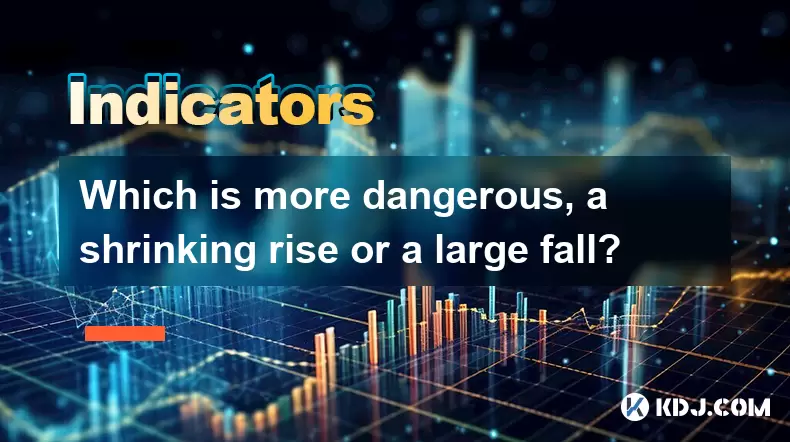
Understanding the Nature of Market Movements in Cryptocurrency
In the volatile world of cryptocurrency, market movements are a constant topic of discussion among traders and investors. Two specific types of price behavior often draw attention: a shrinking rise and a large fall. Understanding which is more dangerous requires analyzing how these movements affect investor psychology, technical indicators, and trading strategies.
A shrinking rise refers to a situation where an asset's price increases over time but with progressively smaller gains. This pattern may indicate weakening buying pressure and could suggest that the upward trend is losing momentum. On the other hand, a large fall is a sudden and significant drop in price, often triggered by negative news, regulatory changes, or broader market corrections.
What Causes a Shrinking Rise?
A shrinking rise typically occurs when bullish momentum starts to fade. As buyers become less aggressive, each successive rally becomes weaker than the one before it. This can be seen in candlestick patterns where higher highs are formed, but with decreasing volume and shorter green candles.
- Reduced buying pressure: Fewer traders are willing to push the price higher.
- Profit-taking behavior: Early investors start selling their holdings, causing smaller rallies.
- Market indecision: Traders hesitate to commit capital due to uncertainty about future performance.
This type of movement often precedes a reversal, especially if key support levels are broken. In crypto markets, where sentiment plays a major role, a shrinking rise can quickly turn into a steep decline if not supported by strong fundamentals or positive developments.
Characteristics of a Large Fall in Crypto Markets
A large fall in cryptocurrency prices is usually dramatic and swift. It can wipe out days or even weeks of gains within hours. Such drops are often driven by external factors such as:
- Regulatory crackdowns: Announcements from governments or financial institutions can cause panic.
- Security breaches: Hacks on exchanges or wallets lead to immediate sell-offs.
- Macroeconomic shifts: Changes in interest rates or inflation policies impact risk assets like crypto.
These events create fear-driven selling, leading to cascading liquidations and further downward pressure. The speed and depth of a large fall make it particularly dangerous for leveraged traders who might face margin calls or total loss of capital.
Comparing the Risks: Shrinking Rise vs. Large Fall
When comparing a shrinking rise and a large fall, it’s essential to evaluate both the psychological and financial risks involved.
A shrinking rise can be deceptive. Because the price continues to move upward, many investors perceive it as a healthy trend. However, the gradual erosion of strength makes it difficult to identify until a reversal is already underway. Those who fail to recognize this subtle shift may hold onto positions too long, only to sell at a loss after the trend has fully reversed.
Conversely, a large fall is immediately noticeable. Its rapid nature gives little room for error, forcing quick decisions. While painful, it also presents opportunities for experienced traders to short the market or buy the dip—if they have the discipline and capital to do so.
Both scenarios carry substantial risk, but the danger lies in different areas: one in misjudging momentum, the other in reacting poorly under pressure.
How to Identify and Respond to These Patterns
Recognizing whether you're dealing with a shrinking rise or a large fall involves technical analysis and emotional control.
For a shrinking rise:
- Monitor volume during rallies; declining volume suggests weakening demand.
- Use moving averages and RSI to detect divergences between price and momentum.
- Set trailing stop-loss orders to protect profits as the price climbs with diminishing strength.
For a large fall:
- Watch for sharp declines accompanied by high volume—this often signals panic selling.
- Check for news events or exchange announcements that might explain the drop.
- Avoid impulsive reactions; assess whether the fall is temporary or indicative of deeper issues.
By combining technical tools with disciplined risk management, traders can better navigate both scenarios without falling victim to emotional decision-making.
Impact on Portfolio Management and Investor Behavior
The psychological toll of a shrinking rise versus a large fall can influence portfolio management strategies differently.
With a shrinking rise, investors may delay cutting losses because the chart still appears positive. This false sense of security can result in holding onto underperforming assets longer than necessary. In contrast, a large fall forces immediate action, sometimes leading to premature exits at the worst possible time.
Diversification and position sizing become crucial in mitigating these risks. Allocating capital wisely across multiple assets and using stop-loss mechanisms helps reduce exposure to either scenario.
Frequently Asked Questions (FAQ)
Q1: Can a shrinking rise ever be a positive sign?
Yes, in some cases, a shrinking rise can indicate consolidation before a stronger breakout. If volume stabilizes and support holds, it might signal accumulation rather than weakening momentum.
Q2: How do I differentiate between a normal pullback and a large fall?
A normal pullback typically sees limited downside with stable volume, while a large fall features aggressive selling, high volatility, and often coincides with fundamental or macroeconomic triggers.
Q3: Should I always exit when I notice a shrinking rise?
Not necessarily. It depends on your strategy and risk tolerance. Some traders use a shrinking rise as a warning to tighten stops, while others wait for confirmation of a reversal before exiting.
Q4: Is it safe to buy during a large fall?
Buying during a large fall can be profitable if done cautiously. Look for oversold conditions, check fundamentals, and ensure you have enough liquidity to withstand potential further declines.
Disclaimer:info@kdj.com
The information provided is not trading advice. kdj.com does not assume any responsibility for any investments made based on the information provided in this article. Cryptocurrencies are highly volatile and it is highly recommended that you invest with caution after thorough research!
If you believe that the content used on this website infringes your copyright, please contact us immediately (info@kdj.com) and we will delete it promptly.
- 2025-W Uncirculated American Gold Eagle and Dr. Vera Rubin Quarter Mark New Products
- 2025-06-13 06:25:13
- Ruvi AI (RVU) Leverages Blockchain and Artificial Intelligence to Disrupt Marketing, Entertainment, and Finance
- 2025-06-13 07:05:12
- H100 Group AB Raises 101 Million SEK (Approximately $10.6 Million) to Bolster Bitcoin Reserves
- 2025-06-13 06:25:13
- Galaxy Digital CEO Mike Novogratz Says Bitcoin Will Replace Gold and Go to $1,000,000
- 2025-06-13 06:45:13
- Trust Wallet Token (TWT) Price Drops 5.7% as RWA Integration Plans Ignite Excitement
- 2025-06-13 06:45:13
- Ethereum (ETH) Is in the Second Phase of a Three-Stage Market Cycle
- 2025-06-13 07:25:13
Related knowledge
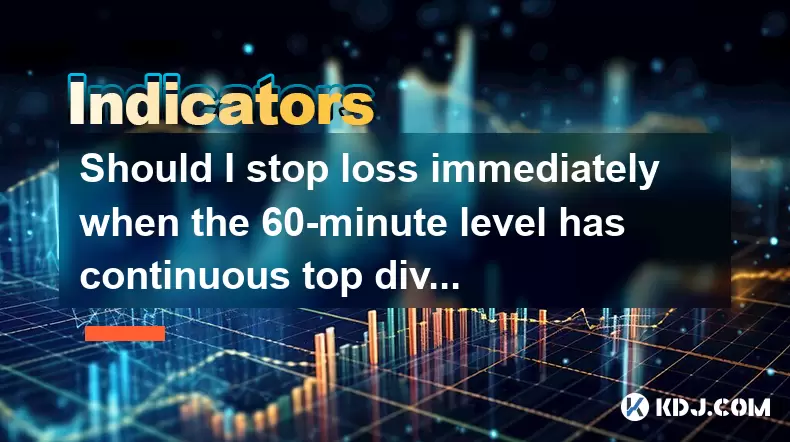
Should I stop loss immediately when the 60-minute level has continuous top divergence?
Jun 17,2025 at 05:28pm
Understanding Top Divergence in the 60-Minute ChartIn cryptocurrency trading, top divergence refers to a technical signal where the price of an asset makes higher highs while the indicator (often RSI or MACD) makes lower lows. This is commonly interpreted as a sign of weakening momentum and potential reversal. When this occurs on the 60-minute chart, it...
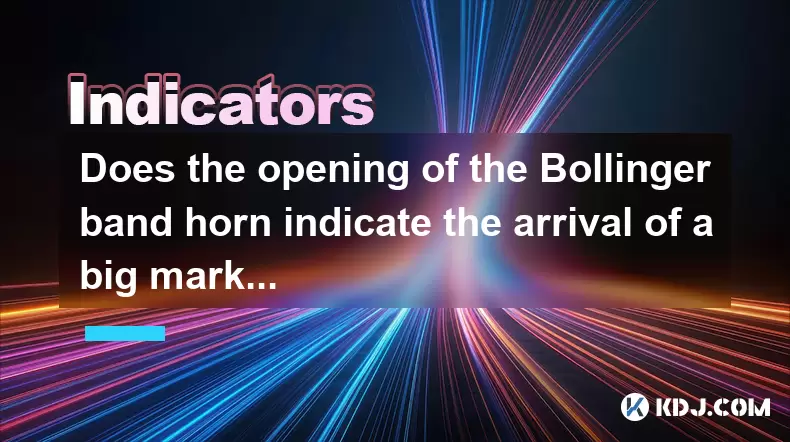
Does the opening of the Bollinger band horn indicate the arrival of a big market?
Jun 17,2025 at 06:28pm
Understanding the Bollinger Bands and Their StructureBollinger Bands are a widely used technical analysis tool in the cryptocurrency market, developed by John Bollinger. They consist of three lines: a simple moving average (SMA), typically set at 20 periods, and two standard deviation bands above and below this SMA. These bands dynamically expand and co...
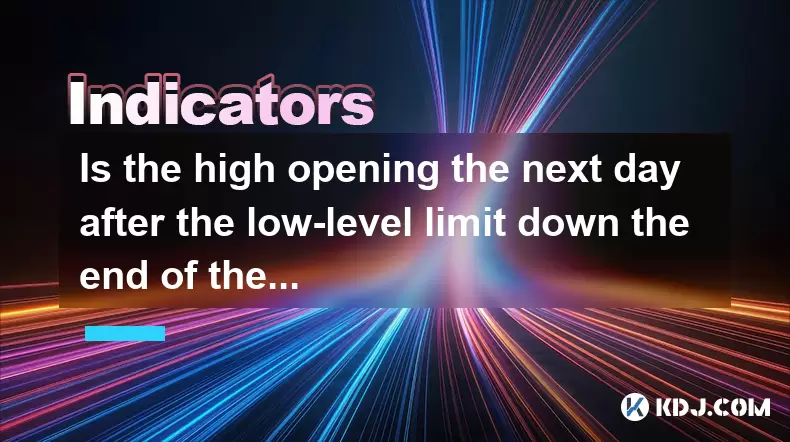
Is the high opening the next day after the low-level limit down the end of the wash?
Jun 17,2025 at 05:57pm
Understanding the Concept of a Limit Down and Its ImplicationsIn the world of cryptocurrency trading, a limit down refers to a situation where the price of a digital asset drops sharply, reaching its maximum allowable decline within a specific time frame. This mechanism is often seen on exchanges that implement daily price limits to prevent excessive vo...
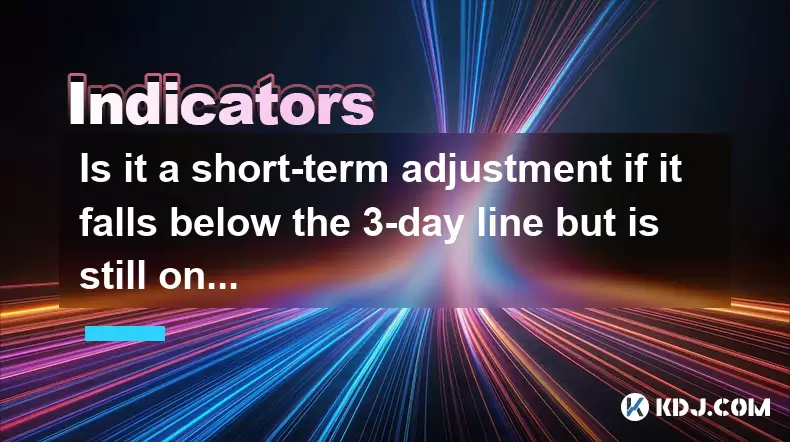
Is it a short-term adjustment if it falls below the 3-day line but is still on the 10-day line?
Jun 17,2025 at 04:07pm
Understanding the 3-Day and 10-Day Moving AveragesIn cryptocurrency trading, moving averages are essential tools for gauging trend strength and potential reversals. The 3-day moving average is a short-term indicator that reflects recent price action with minimal lag, making it highly sensitive to sudden market shifts. In contrast, the 10-day moving aver...
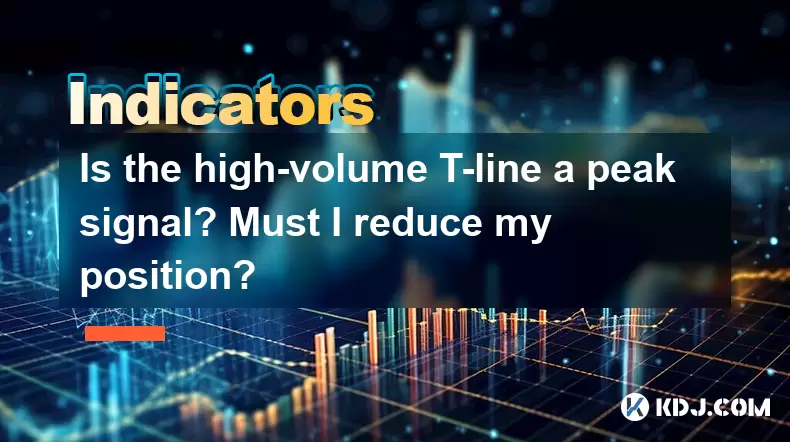
Is the high-volume T-line a peak signal? Must I reduce my position?
Jun 17,2025 at 06:07pm
Understanding the T-Line Pattern in Cryptocurrency TradingIn cryptocurrency trading, technical patterns are frequently used by traders to anticipate price movements. One such pattern is the T-line, which appears on candlestick charts and is characterized by a long upper or lower shadow with little or no body. A high-volume T-line occurs when this patter...
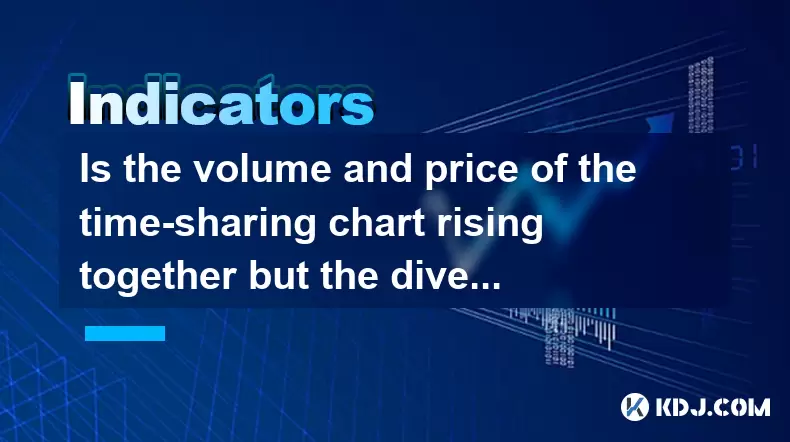
Is the volume and price of the time-sharing chart rising together but the dive at the end of the trading day a lure to buy more? Should I run?
Jun 17,2025 at 07:28pm
Understanding the Time-Sharing Chart DynamicsIn cryptocurrency trading, time-sharing charts are essential tools for short-term traders. These charts show real-time price movements along with trading volume over a specific period, usually within a day. When you observe that both price and volume rise together, it typically signals strong buying pressure ...

Should I stop loss immediately when the 60-minute level has continuous top divergence?
Jun 17,2025 at 05:28pm
Understanding Top Divergence in the 60-Minute ChartIn cryptocurrency trading, top divergence refers to a technical signal where the price of an asset makes higher highs while the indicator (often RSI or MACD) makes lower lows. This is commonly interpreted as a sign of weakening momentum and potential reversal. When this occurs on the 60-minute chart, it...

Does the opening of the Bollinger band horn indicate the arrival of a big market?
Jun 17,2025 at 06:28pm
Understanding the Bollinger Bands and Their StructureBollinger Bands are a widely used technical analysis tool in the cryptocurrency market, developed by John Bollinger. They consist of three lines: a simple moving average (SMA), typically set at 20 periods, and two standard deviation bands above and below this SMA. These bands dynamically expand and co...

Is the high opening the next day after the low-level limit down the end of the wash?
Jun 17,2025 at 05:57pm
Understanding the Concept of a Limit Down and Its ImplicationsIn the world of cryptocurrency trading, a limit down refers to a situation where the price of a digital asset drops sharply, reaching its maximum allowable decline within a specific time frame. This mechanism is often seen on exchanges that implement daily price limits to prevent excessive vo...

Is it a short-term adjustment if it falls below the 3-day line but is still on the 10-day line?
Jun 17,2025 at 04:07pm
Understanding the 3-Day and 10-Day Moving AveragesIn cryptocurrency trading, moving averages are essential tools for gauging trend strength and potential reversals. The 3-day moving average is a short-term indicator that reflects recent price action with minimal lag, making it highly sensitive to sudden market shifts. In contrast, the 10-day moving aver...

Is the high-volume T-line a peak signal? Must I reduce my position?
Jun 17,2025 at 06:07pm
Understanding the T-Line Pattern in Cryptocurrency TradingIn cryptocurrency trading, technical patterns are frequently used by traders to anticipate price movements. One such pattern is the T-line, which appears on candlestick charts and is characterized by a long upper or lower shadow with little or no body. A high-volume T-line occurs when this patter...

Is the volume and price of the time-sharing chart rising together but the dive at the end of the trading day a lure to buy more? Should I run?
Jun 17,2025 at 07:28pm
Understanding the Time-Sharing Chart DynamicsIn cryptocurrency trading, time-sharing charts are essential tools for short-term traders. These charts show real-time price movements along with trading volume over a specific period, usually within a day. When you observe that both price and volume rise together, it typically signals strong buying pressure ...
See all articles

























































































